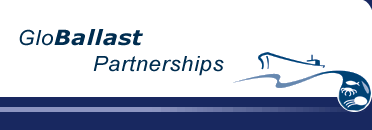Options being considered include:
- Mechanical treatment methods such as filtration and separation.
- Physical treatment methods such as sterilisation by ozone,
ultra-violet light, electric currents and heat treatment.
- Chemical treatment methods such adding biocides to ballast
water to kill organisms.
- Various combinations of the above.
All of these possibilities currently require significant further research
effort. Major barriers still exist in scaling these various technologies
up to deal effectively with the huge quantities of ballast water carried
by large ships (e.g. about 60,000 tonnes of ballast water on a 200,000
DWT bulk carrier). Treatment options must not interfere unduly with
the safe and economical operation of the ship and must consider ship
design limitations. Any control measure that is developed must meet
a number of criteria, including:
- It must be safe.
- It must be environmentally acceptable.
- It must be cost-effective.
- It must work.
One of the problems currently faced by the global R&D community
is that apart from the general criteria above, there are currently
no internationally agreed and approved performance standards or
evaluation system for the formal acceptance of any new techniques
that are developed. In addition, many groups are working in isolation
from each other, and there are no formal mechanisms in place to
ensure effective lines of communication between the R&D community,
governments and ship designers, builders and owners. These are vital
if the R&D effort is to succeed.
The GloBallast Programme hopes to reduce these barriers through
two initiatives, the Ballast Water Treatment R&D Directory (see
below), and convening bi-annual Ballast Water Treatment R&D
Symposium. The 1st Symposium was held in March 2001 (see below).
The PCU also convened a Ballast Water Treatment Standards Workshop
in March 2001, in an effort to assist the MEPC to finalize the newly
adopted Ballast Water Convention (see below).
Search the Ballast Water
Treatment R&D Directory (Database)
Click
here for the Ballast Water Treatment R&D Directory (Adobe PDF)
Click here for the Abstracts from the
1st International Ballast Water Treatment R&D Symposium
Click here for
the Abstracts from the 2nd International Ballast Water Treatment
R&D Symposium (Adobe PDF)
Click here
for the Proceedings from the 1st International Ballast Water Treatment
R&D Symposium
Click
here for the Report of the 1st International Ballast Water Treatment
Standards Workshop
Click
here for the Summary of the Convention Requirements
|




